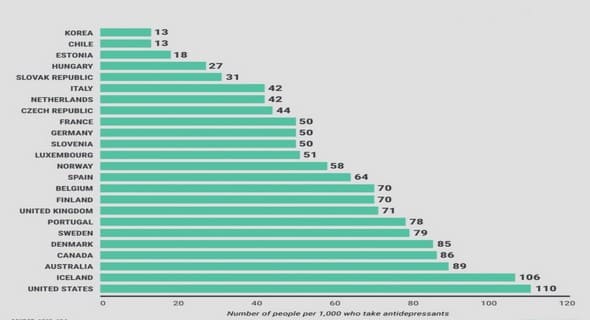(Downloads - 0)
For more info about our services contact : help@bestpfe.com
Table of contents
Introduction
Chapter 1 Directional Couplers in Millimeter-Waves: Presentation
1.1. Classical directional couplers theory
1.1.1. General definitions for a 4-port symmetrical, reciprocal directional coupler
1.1.2. Coupled lines directional coupler
1.2. General types of directional couplers and applications
1.2.1. Branch-line coupler
1.2.2. Coupled lines coupler
1.2.3. Lange coupler
1.2.4. Discussion
1.3. State-of-the-art for integrated coupled lines directional couplers
1.3.1. Broad-side directional coupler
1.3.2. Integrated technologies available at mm-wave: Discussion
1.4. Solution: coupled lines based on slow-wave effect
1.4.1. Characteristic parameters of the transmission lines
1.4.2. Slow-wave coplanar waveguide S-CPW
1.4.3. Discussion
1.5. Conclusion
1.6. References
Chapter 2 Coupled Slow-wave CoPlanar Waveguide (CS-CPW)
2.1. Introduction
2.2. Classical coupled microstrip line
2.3. New Coupled Slow-wave CoPlanar Waveguide (CS-CPW) concept
2.4. Electrical equivalent model for CS-CPW
2.4.1. Equivalent electrical model
2.4.2. Even- and odd-mode Analysis
2.5.1. Validation of the method with the microstrip case
2.5.2. Simulation method: even- and odd-mode
2.5.3. Electrical parameters extraction from even- and odd-mode simulation
2.5.4. Simulation method on the CS-CPW
2.5.5. Simulation results: electrical performance of CS-CPW vs C-μstrip
2.6. Cutting the floating shielding
2.6.1. Concept
2.6.2. Cut in the Center (CC)
2.6.3. Cut on the sides (CS)
2.7. Coupling coefficient vs dimensions variation
2.7.1. Variation of coupling coefficients with 𝑾 and 𝑺
2.7.2. Variation of magnetic coupling with G
2.7.3. Cutting the floating ribbons for 𝒌𝑪
2.7.4. Effect of the cut width
2.7.5. Effect of strip spacing SS and strip length SL
2.8. Analytical model and abacus
2.8.1. Analytical model
2.8.2. Charts
2.9. Technological issues
2.9.1. Effect of dummies in CS-CPW
2.9.2. Dimensions limitations
2.10. Conclusion
2.11. References
Chapter 3 Millimeter-Waves CS-CPW High-Directivity Directional Couplers
3.1. Introduction
3.2. Design method with CS-CPW
3.2.1. Principle
3.2.2. Example
3.3. Practical couplers design
3.3.1. 3 dB coupler at 50 GHz
3.3.2. 18 dB coupling at 150 GHz
3.4. Comparison of CS-CPW with C-μstrip directional couplers
3.5. Multimode TRL de-embedding method
3.6. Measurement results
3.6.1. 18-dB coupling at 150 GHz
3.7. Discussion
3.8. References
Chapter 4 Millimeter-Waves Parallel-Coupled Line Filters with CS-CPW
4.1. Introduction
4.2. Classical parallel coupled line filter theory
4.3. Odd and even-modes characteristic impedances
4.3.1. Characteristic impedances when cutting the floating ribbons
4.4. Design
4.4.1. Parallel-coupled lines resonator
4.4.2. Parallel-coupled lines third-order filter
4.4.3. Practical issues
4.5. Comparison of CS-CPW with state-of-the-art
4.5.1. Simulation with HFSS of the CS-CPW based resonator
4.5.2. Comparison with the state-of-the-art
4.6. Conclusion
4.7. References
Chapter 5 Applications of the CS-CPW Directional Couplers
5.1. Introduction
5.2. Reflection-Type Phase Shifter (RTPS) with CS-CPW
5.2.1. State-of-the-art of mm-wave phase shifters
5.2.2. Principle of the RTPS with CS-CPW
5.2.3. Results of the CS-CPW directional coupler for the RTPS
5.2.4. Results of the RTPS using the 3-dB CS-CPW directional coupler
5.3. Isolator
5.3.1. State-of-the-art for mm-wave isolators
5.3.2. Principle of the isolator with CS-CPW
5.3.3. Results of the CS-CPW directional coupler for the isolator
5.3.4. Results of the isolator using the 7.5-dB, CS-CPW directional coupler
5.4. Baluns
5.4.1. State-of-the-art for mm-wave baluns
5.4.2. Principle of the balun with CS-CPW
5.4.3. Results of the CS-CPW directional coupler for the balun
5.4.4. Results of the balun using the 80 GHz, 3-dB, 50 Ω, CS-CPW directional coupler
5.5. Conclusion
5.6. References
General Conclusions



